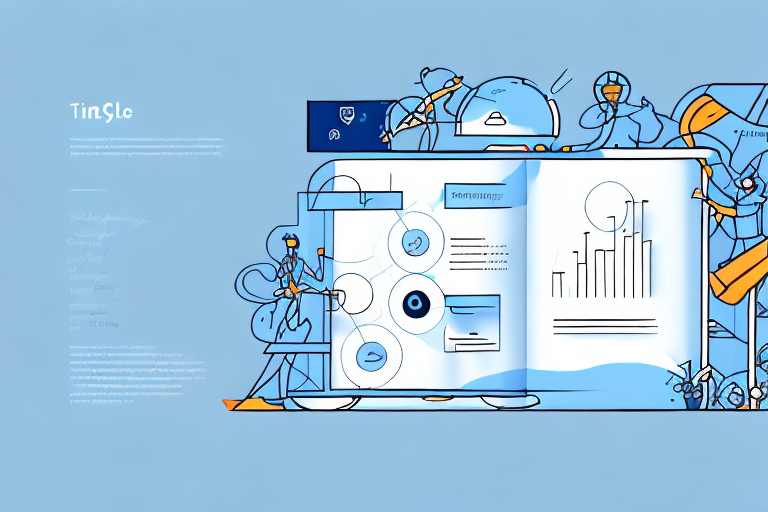Achieving KPI Delivery Through Effective Planning and Execution
Key Performance Indicators (KPIs) are essential metrics that help businesses gauge their success and progress toward strategic goals. Effectively planning and executing KPIs can transform organizational performance, driving growth and ensuring sustained success. This article explores comprehensive strategies to achieve KPI delivery through meticulous planning and execution.
Understanding the Importance of KPIs in Business Performance
KPIs offer visibility into the operational efficiency and overall health of a business. By measuring critical aspects of performance, KPIs help organizations identify strengths, pinpoint weaknesses, and track progress towards their objectives. According to a Forbes article, businesses that effectively utilize KPIs are 12% more productive than those that do not.
Setting Realistic Targets with KPIs
KPIs enable businesses to set achievable targets by analyzing historical data and performance trends. This data-driven approach ensures that goals are both challenging and attainable, fostering motivation and aligning team efforts with the organization's strategic vision.
Data-Driven Decision Making
Access to real-time KPI data empowers businesses to make informed decisions swiftly. This reduces reliance on assumptions and enhances the accuracy of strategic initiatives, ultimately minimizing risks and maximizing success rates.
Setting SMART KPIs for Your Business
Adopting the SMART framework—Specific, Measurable, Achievable, Relevant, and Time-Bound—is crucial for effective KPI development. This approach ensures that each KPI is well-defined and aligned with the company's strategic objectives.
Specific
KPIs should clearly define what is being measured, leaving no ambiguity about the expected outcomes.
Measurable
Quantifiable KPIs allow for precise tracking of progress, making it easier to assess performance against targets.
Achievable
Setting realistic KPIs ensures that goals are attainable, fostering sustained motivation and reducing the risk of employee burnout.
Relevant
KPIs must align with the broader business objectives to ensure that every metric contributes to the company's success.
Time-Bound
Establishing clear timelines for KPI achievement creates urgency and prioritizes tasks effectively.
The Role of Planning in Achieving KPI Delivery
Strategic planning is the backbone of successful KPI delivery. It involves identifying relevant metrics, allocating resources efficiently, and establishing a clear roadmap to achieve desired outcomes.
Identifying the Right Metrics
Selecting the appropriate KPIs is critical. Metrics should directly relate to the business's strategic goals and provide actionable insights. For example, a sales team might focus on metrics like monthly revenue growth or customer acquisition costs.
Resource Allocation
Effective planning ensures that the necessary resources—such as technology, personnel, and budget—are allocated to support KPI achievement. This minimizes bottlenecks and ensures that teams have what they need to succeed.
Developing Contingency Plans
Identifying potential obstacles and preparing contingency plans helps mitigate risks that could derail KPI achievement. This proactive approach ensures that businesses remain agile and can adapt to unforeseen challenges.
Implementing Effective KPI Planning and Execution
Successful KPI implementation requires a structured approach that encompasses planning, execution, and continuous monitoring. Here are the key steps to ensure effective KPI management:
- Define Clear Objectives: Establish what you aim to achieve with each KPI.
- Assign Responsibilities: Allocate specific KPIs to relevant team members or departments.
- Use Reliable Tools: Implement software solutions that facilitate KPI tracking and reporting.
- Regular Monitoring: Continuously track KPI progress and make adjustments as necessary.
- Feedback and Adjustment: Provide regular feedback to teams and revise KPIs based on performance data.
Communicating KPIs to the Team
Effective communication ensures that all team members understand the KPIs and their role in achieving them. Regular updates and transparent reporting foster a sense of accountability and collective responsibility.
Leveraging Technology
Utilizing advanced tools and platforms can streamline KPI tracking and reporting. Technologies like Tableau and Microsoft Excel offer robust data visualization and analysis capabilities, enhancing the effectiveness of KPI management.
Creating a High-Performance Culture to Achieve Your KPIs
A high-performance culture is integral to successful KPI delivery. It involves fostering an environment where employees are motivated, empowered, and aligned with the company's goals.
Employee Empowerment
Empowering employees by involving them in the KPI setting process increases ownership and commitment. When team members understand how their roles contribute to overarching goals, they are more likely to strive for excellence.
Continuous Learning and Development
Investing in training and development programs equips employees with the skills needed to achieve their KPIs. A culture of continuous improvement encourages innovation and adaptability.
Recognition and Rewards
Recognizing and rewarding team members for KPI achievements fosters motivation and reinforces positive behavior. This can include bonuses, public acknowledgment, or career advancement opportunities.
Assessing Your Progress: Evaluating and Tracking Your KPIs
Regular evaluation and tracking are essential for understanding KPI progress and making necessary adjustments. Utilizing dashboards and analytics tools can enhance this process.
Using Dashboards for KPI Tracking
Dashboards provide a visual representation of KPI data, making it easier to monitor performance at a glance. Tools like Google Analytics and Microsoft Power BI offer customizable dashboards that cater to various business needs.
Setting Realistic Goals
Establishing achievable goals ensures sustained progress and prevents team burnout. Regularly reviewing and adjusting these goals keeps them aligned with the dynamic business environment.
Incorporating Feedback Loops
Implementing feedback mechanisms allows for continuous improvement. Gathering input from team members and stakeholders helps refine KPIs and optimize performance strategies.
Common Pitfalls to Avoid When Implementing KPIs
While KPIs are powerful tools for performance measurement, certain common pitfalls can hinder their effectiveness:
- Overcomplicating KPIs: Focusing on too many metrics can dilute focus and reduce the impact of each KPI.
- Lack of Alignment: KPIs that do not align with business objectives can lead to misguided efforts.
- Poor Communication: Failing to communicate KPIs clearly can result in misunderstandings and lack of commitment.
- Ignoring Data Quality: Relying on inaccurate or incomplete data undermines the reliability of KPIs.
Ensuring KPI Relevance
Regularly reviewing KPIs to ensure they remain relevant to current business goals prevents wasted effort and maintains strategic focus.
Aligning Your Team’s Goals with Company-Wide Objectives
Alignment between individual team goals and company-wide objectives ensures cohesive progress and maximizes organizational efficiency.
Setting Clear Expectations
Clearly defined expectations help team members understand their roles in achieving KPIs. This clarity fosters accountability and enhances performance.
Regular Team Meetings
Consistent team meetings provide opportunities to discuss progress, address challenges, and recalibrate strategies as needed. This ongoing dialogue maintains alignment and momentum.
Empowering Employees to Drive Success Through Effective Communication
Effective communication is the cornerstone of employee empowerment. It ensures that everyone is informed, engaged, and motivated to contribute to KPI achievement.
Open Communication Channels
Establishing open lines of communication between management and employees encourages the sharing of ideas and concerns, fostering a collaborative environment.
Constructive Feedback
Providing regular, constructive feedback helps employees understand their performance, recognize strengths, and identify areas for improvement.
Leveraging Technology to Streamline KPI Planning and Execution
Advanced technology solutions can significantly enhance KPI planning and execution by automating data collection, facilitating real-time analysis, and enabling seamless collaboration.
Automating Data Collection
Automation reduces the time and effort required to gather KPI data, increasing accuracy and allowing teams to focus on strategic initiatives.
Advanced Analytics
Leveraging analytics tools helps businesses uncover insights from KPI data, enabling more informed decision-making and strategic planning.
Case Studies: Successful Companies That Have Achieved Their KPIs
Examining case studies of successful companies provides valuable insights into effective KPI planning and execution. For instance, Nike leverages KPIs to drive innovation and maintain market leadership by aligning performance metrics with their strategic goals.
Best Practices for Measuring ROI on Your KPI Strategy
Measuring the return on investment (ROI) of your KPI strategy involves assessing the financial and operational benefits derived from KPI implementation compared to the costs incurred.
Evaluating KPI Impact
Assess how each KPI contributes to revenue growth, cost reduction, customer satisfaction, and other key business outcomes.
Using Benchmark Data
Comparing KPI performance against industry benchmarks provides context and helps identify areas for improvement.
Involving Stakeholders
Engaging key stakeholders in ROI assessments ensures a comprehensive evaluation of KPI effectiveness and facilitates informed decision-making.
In conclusion, achieving KPI delivery through effective planning and execution requires a strategic approach that encompasses setting SMART KPIs, meticulous planning, aligning team goals with company objectives, fostering a high-performance culture, leveraging technology, and continuously evaluating performance. By avoiding common pitfalls and adhering to best practices, businesses can harness the full potential of KPIs to drive sustained success.






















